
|

|
Forum Index : Electronics : DC Generator project
| Author | Message | ||||
| arthur8 Regular Member Joined: 08/05/2019 Location: BrazilPosts: 69 |
Hey friend. :) Thanks for the follow up. The secret is to search daily. I was really trying to find a generator with a vw engine on it, this engine is very nice. Had to travel at 04:00 AM to another city (about 500km) to take this boy home, was not easy but its worthy. Was looking a cheaper way to detect a low cylinder. Cylinder scales looks a bit expensive from what i've seen. Was looking to make a DIY cylinder scale, but don't know where to start. Any suggestions on how to do this? Also, good to know. Will write some lines on arduino so it will keep the engine turned on for 15 minutes for cool down. Also, i will try to find the hottest spot on the generator chassis to find its temperature. If too high, arduino can low the RPM and low the amperage or sound any alarm, etc. With the fantastic help of everyone, i think i will make the most reliable & cheap generator running ever seen.  |
||||
| Warpspeed Guru Joined: 09/08/2007 Location: AustraliaPosts: 4406 |
The real cheapy Mickey Mouse way, would be to use an ancient spring scale, and a slider potentiometer. It should cost like nothing to make, and give 0v to 5v output.  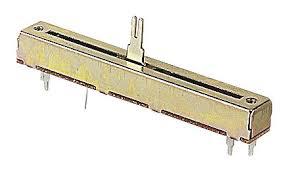 Cheers, Tony. |
||||
| Davo99 Guru Joined: 03/06/2019 Location: AustraliaPosts: 1577 |
Perhaps the easiest and most reliable way is to forget the arduino and just look at the scale for fuel measurement. You'll have to check the oil and other things anyway, glancing a gauge shouldn't be too onerous. I'm sure after a while you'd get a feel for how much run time you could get anyway. I would look into the LPG thing. That engine is not likely to have the hardened valve seats that are recommended for LPG so that could be an issue or you might have to run some form of lubricant. Have you also checked the price of Bottled gas in your area and compared the energy value to that of Petrol? You will also most likely be up for gas rental on 2 Bottles as well as I assume you will want the second for a spare when the first runs out. If this is for Intermittent use in bad weather etc, Might be better off just using 9 Kg bottles. For the yearly rent on a 45Kg bottle round here you could buy 3 9 Kg bottles and they are good for 10 years. You can also get them filled at the local servo rather than having to get them delivered which if you are remote, they won't do. They are even fussy about the road, turning circle and where you put the 45 Kg bottles. If you don't meet their PC and OH&S Bs, then they won't provide them and a lot of places here won't let you transport yourself unless you are set up specifically for it. One " Hack" that may be available to you is to do what a mate has done for years. Has a car LPG bottle in the back of his ute. has the filler under the tray so it all looks legit. Lifts it into the back of his ute with the tractor, does up the brackets, fills the bottle in town, takes it back out and connects it up again. MUCH cheaper than having bottled gas delivered which they won't do for him anyway. I was going to get a gas stove in our recent kitchen rebuild but gave up on the idea. 9 Kg bottles for sure were going to be a LOT less hassle than 45's with all the rules and regs and the gas guy was doubtful they would deliver to me as they couldn't get the truck to the back and will only wheel the bottles a certain distance. You'd think they were transporting TNT not BBQ gas. With 20Kw+ of solar, wasn't hard to stick to electric even though Mrs and I prefer the visual control with gas. |
||||
| Boppa Guru Joined: 08/11/2016 Location: AustraliaPosts: 814 |
Those old VW industrials were a very solid motor... If it hasn't been running for a long time, you may need to ' flash ' the genny to get it to start charging, plus it most likely has the old 'vibrator' mechanical reg, the contacts may need cleaning... Also- depending on age, it may have the oiled bushes (the early 32hp ones did) in the generator (the engine one, not the welder one) which would likely be bone dry and if not reoiled will wear horrifying fast... seizing the bushes and spinning them out... Done a lot of work on the old VW motors over the years here ETA It won't have hardened seats needed for LPG but... You can get them (heads will need machining to fit them) used in the later model ULP motors... Alternatively, use a 'upper cylinder lubricant kit' these were common as years ago when ULP was first introduced, and I think would still be available Edited 2019-11-19 18:10 by Boppa |
||||
| arthur8 Regular Member Joined: 08/05/2019 Location: BrazilPosts: 69 |
This is a good idea.  Will try to find those locally. They look cheap. Thanks, Warp. |
||||
| arthur8 Regular Member Joined: 08/05/2019 Location: BrazilPosts: 69 |
Hey friend. You are right. Actually, i will try to import data to Arduino because it is cheap, but, for sure, i will have direct contact to the generator at least one time per month to check the oil and check the GLP and to appreciate the sound of a good old boxer engine running, i just love those. Well, about the LPG thing. Actually, gasoline in Brazil is expensive and its really bad quality. It does have about 25% (in the real world is much more like 30% to 40%) of alcohol, and this portion of alcohol contains a bit of water. Gas is cheaper here. On a car like the VW Beetle guys with 14KG (we don't have 9KG bottles here) LPG bottle can make ~200+ kilometers with just one bottle. A 14KG LPG bottle costs about US$ 18. The gasoline to travel 200 kilometers costs about US$ 38 to US$ 45. Also, i like the fact that LPG lasts (i think) forever. Here, we don't fill the LPG bottles, we just change them. That's bad, but we have just this option. You said this engine does not have hardened valve seats and that makes me a bit worried about this. Change the valves is something is really don't know how to do myself and i don't know any trustable mechanic to do it for me.  Do you have any suggestions on how to fix this valve seats thing? Feeling a little worried about this now. Thanks for your time. |
||||
| arthur8 Regular Member Joined: 08/05/2019 Location: BrazilPosts: 69 |
Boppa, Thank you for the incredible help, i will take a look on all of those. The old owner painted the entire engine (  ) and painted also the dinamo, the connections, also painted a little inside of the dinamo. Will need to take it off and do a clean up and try this tutorial. ) and painted also the dinamo, the connections, also painted a little inside of the dinamo. Will need to take it off and do a clean up and try this tutorial. It does have an bosch regulator, will do it like you suggested. About oiling the brushes, do you know how i can do it? Tried to find any info about this and didn't found any useful info on those oil brushes and how to check if my dynamo is oiled or not. Also, you gave me a very good solution to the valve problem. The kit you suggested is something like this ? It is compatible with the old vw carburetor? Can't thank you guys more for all for the precious help. Edited 2019-11-20 07:05 by arthur8 |
||||
| Warpspeed Guru Joined: 09/08/2007 Location: AustraliaPosts: 4406 |
The story about the hardened valve seats is a long one. But basically in the old days petrol contained a lot of tetra-ethyl lead. The lead in the fuel tended to deposit itself on the exhaust valves and acted as a sealant and a lubricant. The poisonous lead fumes also spewed out of the exhaust and was very bad for the environment. Unleaded fuel was then gradually introduced, late 1960's early 1970's I think it was. Vehicle manufacturers found they had to fit hardened exhaust valve seats to cylinder heads to prevent the valve seats from eroding away and the valves burning. This only happened at very high mileages after many years. Maybe 50,000 miles or five years. The problem was mainly with cast iron cylinder heads where the grade of cast iron used is deliberately fairly soft, so the tooling used during manufacture would not wear out too quickly. Anyhow, many of the better European, British, and Japanese engines used aluminium heads, including VW. These ALWAYS have valve inserts, as aluminium by itself is far too soft. Now the issue with that, is what those valve inserts are made of. If its crappy cast iron, they may not be up to the job and have similar problems to the cast iron cylinder heads. But the inserts could also be made of higher grades of high temperature and very hard stainless steel alloy similar to the exhaust valves themselves. There is a fairly good chance that your old VW industrial engine valve seats will be fine, I really do not know. Some internet research may answer that question. But even if the valve seats are crap, they are going to last a very long time as you are not going to be running that generator at full load 24 hours every single day. So if it starts and runs well, don't worry about it. Cheers, Tony. |
||||
| Boppa Guru Joined: 08/11/2016 Location: AustraliaPosts: 814 |
Bit later than that Warp, mid 80's here in Oz was the changeover And the stock VW inserts did suffer valve seat recession issues on it, which is why the mob I used to work at fitted the lub kits (yep, Arthur, that's exactly the same ones we used) (ETA the later model seats were hardened, but not the 1200 motor in the genpack he has, and unfortunately the hardened seats were for the bigger valves in the later motors, so won't fit the 1200) They specialised in VW's so had a bit of experience with the old flat fours.... Some model dyno's had smalll bronze oiling caps that you open and soak the flax inside with oil, can't see any on yours but they may be out of sight... If it doesn't have them, then it's a stripdown to do them, in which case fitting new ones (and a set of brushes and a comm skim (or at least a sanding and undercutting) will make it run for years You can 'halfass' oil them in place (ie without pressing them out) by filling the bush full of light oil and 'squeezing' it into the bush in place (which is how you do it with new ones lol- put it on your thumb, fill with oil and squeeze it both ends between thumb and finger until oil 'sweats' out the outer skin of the bush) (as you may have guessed, I've done a few of these old gennys over the years) Alternatively, you could put a alternator kit on it- there are aftermarket conversions for them, very common (also- check to see if it's a 6v or 12v genny- it could be either!!!)- You can still safely run the 6v starter on those old vw's off 12v- they spin faster than the engine idles(!!!) when starting which makes for really easy starting, and they last for decades without issue doing it, so if it is a 6v- you can safely do a 12v conversion (coil, alternator) and leave the starter as a 6v one, starting off a 12v battery Edited 2019-11-22 11:05 by Boppa |
||||
| Davo99 Guru Joined: 03/06/2019 Location: AustraliaPosts: 1577 |
Arthur, It is not the valves but rather the valve seats that cause the problem. The only proper fix is to take the heads off, take them to a machine shop and have the old seats taken out and new hardened ones cut in. Here a lot of petrol cars were converted to gas for Taxis and the gas is also very dry and caused valve seat problems the same as unleaded. Looking up the MSDS of the flash lube it's interesting. The only " chemicals" in it are less that 10% of the ingredients. The rest is A mix of kero, diesel and of course the ever present in every additive out there, Naptha. The diesel is base so probably the more slippery kind as is the kero. Makes me wonder if adding normal run of the mill 2 stroke oil wouldn't do much the same job? I know it improves the lubricity of pump diesel out of sight. Low sulphur Diesel is also dry now and causes high wear in older injector pumps. Adding 2 Stroke oil or Veg oil which would be the other other contender, increases the lubricity rating of diesel literally hundreds of times even at very low ratios. . 100:1 of veg would burn perfectly clean as would 2 stroke at 50:1. Don't know how you would work out the rations on gas. Spose you could take the amount of liquid and calculate from there to get in the ball park. Run the thing a few hours and if the plugs are clean but tinted, You should be about in the ball park. |
||||
| PeterB Guru Joined: 05/02/2015 Location: AustraliaPosts: 639 |
G'Day arthur et al Google lists cheap load cells and interface modules using the HX711. There is information available for connecting the HX711 to an Arduino via !2C. Does this help ?  Peter |
||||
| hugocamaras Newbie Joined: 12/04/2019 Location: BrazilPosts: 24 |
E ai? como está a montagem com a placa Mad? |
||||
| hugocamaras Newbie Joined: 12/04/2019 Location: BrazilPosts: 24 |
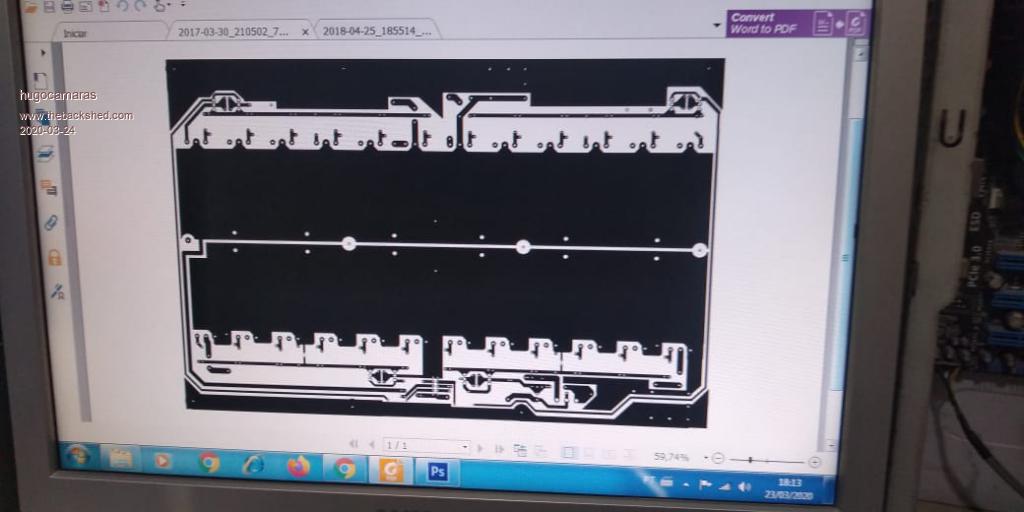 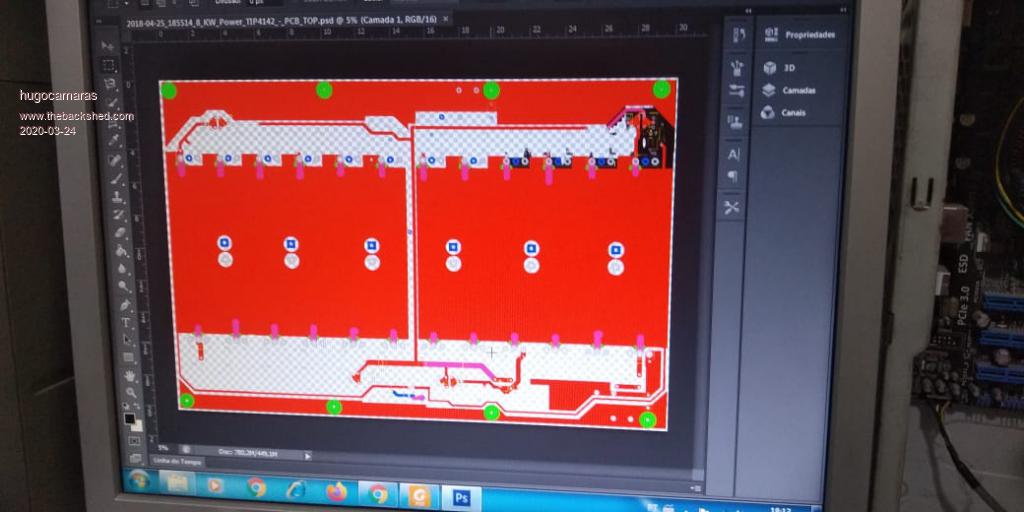 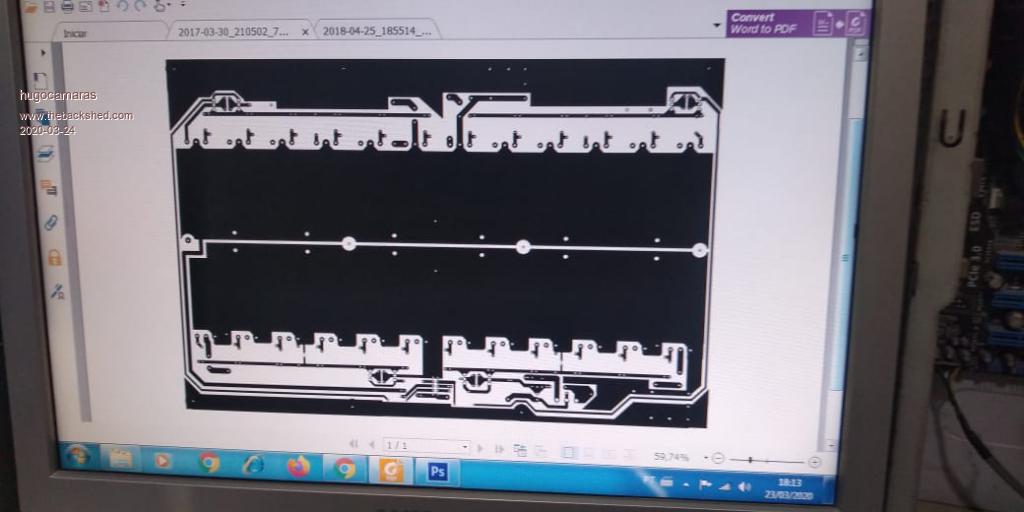 E ai Artur, estou tentando limpar uma imagem do layout da parte de cima da placa de potencia do Mad mas está dificil. kkkk Estou quase terminando de limpar com o Photoshop mas não sei se está correto essa imagem e as trilhas da parte de cima. a de baixo o Mad já tinha postado pdf pronto. só falta a de cima. tem como vc me dar uma ajudinha? (33)988161426 whats e telegran. desde já agradeço. |
||||
| Pete Locke Senior Member Joined: 26/06/2013 Location: New ZealandPosts: 178 |
A simple 'No Batteries Required' tank level indicator can be made with a wire and float. Used a lot on small home built aircraft. 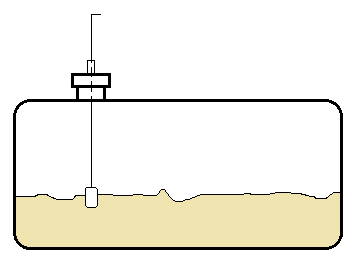 Cheers Pete'. |
||||